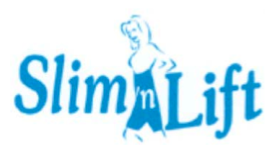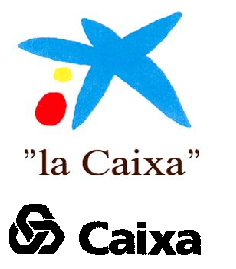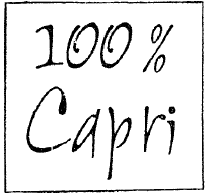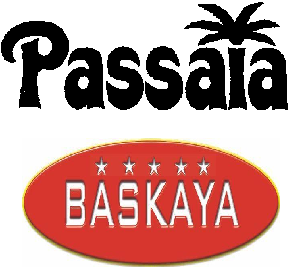Staken gebruik van merken en handelsnaam Nope is Dope
Vzr. Rechtbank Rotterdam 18 juli 2012, zaaknr. 40434/KG ZA 12-485 (Eiser c.s. tegen Nope is Dope B.V. c.s.) Uitspraak én samenvatting ingezonden door Bert Gravendeel, Gravendeel Advocaten.
Uitspraak én samenvatting ingezonden door Bert Gravendeel, Gravendeel Advocaten.
Merkenrecht. Handelsnaamrecht. Domeinnamen.
In de onderhavige zaak heeft één van de eisers enkele merken in licentie gegeven aan één van de gedaagden, op voorwaarde dat hij een aandeel zou verwerven van 33% in het aandelen pakket van de betrokken gedaagde. Het aandeel verwerft hij niet en verwerving na 3 jaar in het licht van de huidig zaak wordt in kort geding als onvoldoende spoedeisend geoordeeld. Eiser stelt dat later een van de andere gedaagden de merkrechten wegens een vervalste akte heeft doen overdragen. Dit komt niet voldoende vast te staan, omdat de originele akte nergens is te vinden en aan relevant grafologisch onderzoek niet kan worden toegekomen. De andere eiser is auteursrechthebbende op het logo dat in meerdere van de genoemde merken is opgenomen. Eiser heeft de met de merknaam overeenstemmende domeinnaam nopeisdope.com, die op naam stond van één van gedaagden, zonder titel overgedragen aan de andere eiser na bedreigingen. Eiser vordert om als bewindvoerder ex art 710 Rv bij de werkmaatschappij Nope Is Dope BV te worden aangesteld, maar dit wordt door de voorzieningenrechter afgewezen. De vordering in reconventie tot staking van het gebruik van de merken en handelsnaam Nope Is Dope en overdracht van het domein nopeisdope.com wordt toegewezen aan gedaagden.
De voorzieningenrechter beveelt eiser c.s inbreuk op de merkrechten en de handelsnaam te staken en gestaakt te houden, beveelt eiser c.s. de domeinnaam nopeisdope.com ter vrije beschikking van Nope Is Dope c.s. te stellen. De proceskosten worden gematigd en deels gecompenseerd.
Merkinbreuk
6.5.2 Gelet hierop is niet met de in kort geding vereiste mate van zekerheid vast te stellen aan wie de merkrechten toebehoren. Binnen dit kort geding, waarbinnen voor verdere bewijsvoering gen plaats is, in het kader van de belangenafweging terughoudendheid geboden met het treffen van voorlopige voorzieningen die vergaande negatieve consequenties kunnen hebben voor de bedrijfsvoering van partijen, waaronder het veroorzaken van blijvende schade. Dat het niet gebruik kunnen maken van de merkrechten A tot en met E voor NID c.s., meer in het bijzonder Nope is Dope B.V., ernstige schade met zich meebrengt is evident. Nope is Dope B.V. maakt sinds haar oprichting in september 2009 veelvuldig gebruik van haar (licentie)rechten op de merken A tot en met E bij het promoten van de door Nope is Dope B.V. georganiseerde (dans)evenementen en de verkoop van tickets ten behoeve van die evenementen. Hiermee heeft NID c.s. voldoende aannemelijk gemaakt een zwaarwegend beland te hebben bij de merkrechten A tot en met ter uitvoering van de bedrijfsactiviteiten van Nope is Dope B.v.. Eiser c.s. heeft een redelijk, zwaarwegend belang bij de merkrechten op A tot en met onvoldoende onderbouwd en aannemelijk gemaakt. Weliswaar heeft eiser ter zitting verklaard zo'n drie keer -met gebruik van zijn merkrechten- bedrijfsactiviteiten te hebben ontplooid, maar eiser c.s. heeft hier geen stukken van overlegd. Voorts kan in de geschetste situatie niet worden uitgesloten dat het door eiser c.s. gebruiken van voornoemde merkrechten voor het ontplooien van soortgelijke bedrijfsactiviteiten als Nope is Dope B.V. als onrechtmatig handelen van eiser c.s. jegens Nope is Dope B.V. gekwalificeerd moet worden. Daar komt bij dat de rechten van de licentienemer niet zonder omstandigheden zal de voorzieningenrechter zodanige voorzieningen treffen die er op neerkomen dat de bestaande situatie gehandhaafd wordt tot in de bodemprocedure hierover is beslist, dan wel partijen anderszins tot en vergelijk zijn gekomen. Het onder I primair in reconventie ten aanzien van de merkrechten A tot en met E zal daarom als na te melden worden toegewezen, onder afwijzing van het onder 3 in conventie gevorderde ten aanzien van de merken A, B, D en E. De meegevorderde dwangsom zal worden gematigd en gemaximeerd. Nu noch NID c.s., noch eiser c.s. aannemelijk heeft gemaakt dat de andere partij inbreuk maakt op de merkrechten F en G, en ook overigens niet is voldaan aan de vereisten van artikel 2.20 lid 1 onder c BVIE, zullen de vorderingen onder 3 in conventie en onder I primair in reconventie voor zover die zien op F en G worden afgewezen.6.5.3 Gelet op het onder 6.5.2 overwogene zal de vordering onder 4 in conventie worden afgewezen omdat deze vordering ziet op logo's die tevens zijn aan te merken als beeldmerken en over deze beeldmerken is onder 6.5.2 reeds geoordeeld. De vraag of de -als productie 21 door eiser c.s. overgelegde- akte van overdracht auteursrechten d.d. 12 april 2006 tussen derde en eiser echt dan wel vervalst is kan mitsdien onbesproken blijven.
Handelsnaam
6.8 (...) Tussen partijen is niet in geschil dat Nope is Dope B.V. de handelsnaam Nope is Dope sinds haar oprichting op 2 september 2009 gebruikt voor haar bedrijfsactiviteiten en de website. Eiser heeft onvoldoende onderbouwd en aannemelijk gemaakt dat hij onder de naam Nope is Dope deelneemt aan het economisch verkeer, waarbij materieel voordeel wordt beoogd en waarmee hij in min of meer blijvend verband naar buiten toe optreedt. Hiermee voldoet eiser c.s. niet aan artikel 1 van de Handelsnaamwet.Domeinnaam
7.3 De voorzieningenrechter stelt (...) dat voorshands voldoende aannemelijk is dat Nope is Dope B.V. rechthebbende is op de domeinnaam nopeisdope.com. Tussen partijen is voorts niet in geschil dat Nope is Dope B.V. tot voor kort de domeinnaam nopeisdope.com in gebruik had en dat eiser c.s. deze domeinnaam, middels het wijzigen door eiser van de inloggegevens, zich heeft toegeëigend. Eiser c.s. heeft dit zelf ter zitting erkend. De voorzieningenrechter kwalificeert dit handelen als domeinkaping. Dat NID c.s., meer in het bijzonder Nope is Dope B.V., hierdoor grote schade kan lijden is evident. De weigering van eiser c.s. om de domeinnaam toegankelijk te maken en over te dragen aan NID c.s. maakt daarom naar voorlopig oordeel inbreuk op de rechten die NID c.s. op de website kan doen gelden. Hiermee ligt de vordering onder V in reconventie, voor zover die ziet op de domeinnaam nopeisdope.com, als na te melden voor toewijzing gereed, met dien verstande dat het onder V i)primair gevorderde, gezien de door de voorzieningenrechter op dat punt te betrachten terughoudendheid, niet wordt toegewezen. De onder V gevorderde dwangsom zal worden gematigd en gemaximeerd. De vordering onder IV in reconventie zal niet afzonderlijk worden toegewezen omdat NID c.s. de onder IV in reconventie gevorderde handelingen zelf in haar macht heeft op het moment dat de domeinnaam nopeisdope.com aan haar te vrije beschikking staat.
Op andere blogs:
DomJur (nummer 2012-873)
 In navolging van IEF
In navolging van IEF  Uitspraak ingezonden door Janouk Kloosterboer,
Uitspraak ingezonden door Janouk Kloosterboer,  Gemeenschapsmerkenrecht. In de oppositieprocedure komt de aanvrager van het beeldmerk dat het woordelement
Gemeenschapsmerkenrecht. In de oppositieprocedure komt de aanvrager van het beeldmerk dat het woordelement  Merkenrecht. Bodemprocedure. Solvay-arrest.
Merkenrecht. Bodemprocedure. Solvay-arrest. Merkenrecht. Stukgelopen samenwerking. Meerdere buitenlandse gedaagden. Anticipatie op Solvay/Honeywell. Revolution maakt inbreuk op Evolution.
Merkenrecht. Stukgelopen samenwerking. Meerdere buitenlandse gedaagden. Anticipatie op Solvay/Honeywell. Revolution maakt inbreuk op Evolution. Gemeenschapsmerkenrecht. In de nietigheidsprocedure wordt door de houder van de oudere woordmerken
Gemeenschapsmerkenrecht. In de nietigheidsprocedure wordt door de houder van de oudere woordmerken  Gemeenschapsmerkenrecht. Beroep tegen afwijzing van de inschrijvingsaanvraag voor gemeenschapsmerk
Gemeenschapsmerkenrecht. Beroep tegen afwijzing van de inschrijvingsaanvraag voor gemeenschapsmerk  Gemeenschapsmerkenrecht. In de nietigheidsprocedure wordt door de houder van het oudere merk
Gemeenschapsmerkenrecht. In de nietigheidsprocedure wordt door de houder van het oudere merk  Gemeenschapsmerkenrecht.
Gemeenschapsmerkenrecht. In de oppositieprocedure komt de aanvrager van het gemeenschapsbeeldmerk
In de oppositieprocedure komt de aanvrager van het gemeenschapsbeeldmerk  In de oppositieprocedure komt de aanvrager van het beeldmerk dat het woordelement
In de oppositieprocedure komt de aanvrager van het beeldmerk dat het woordelement  Gemeenschapsmerkenrecht. In de oppositieprocedure komt de aanvrager van het beeldmerk 'bluepod media' (klasse 9, 35, 38 en 41) de houder van het gemeenschapsbeeldmerk
Gemeenschapsmerkenrecht. In de oppositieprocedure komt de aanvrager van het beeldmerk 'bluepod media' (klasse 9, 35, 38 en 41) de houder van het gemeenschapsbeeldmerk  In de oppositieprocedure komt de aanvrager van het woordmerk
In de oppositieprocedure komt de aanvrager van het woordmerk  In de oppositieprocedure komt de aanvrager van het woordmerk
In de oppositieprocedure komt de aanvrager van het woordmerk  In de oppositieprocedure komt de aanvrager van het woordmerk
In de oppositieprocedure komt de aanvrager van het woordmerk 





















































































